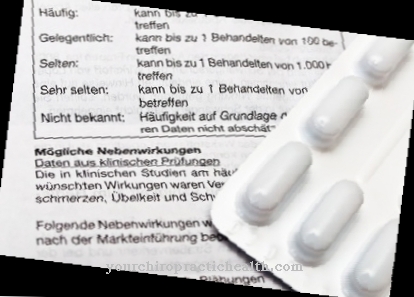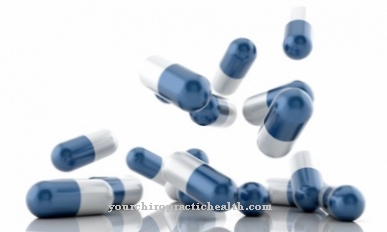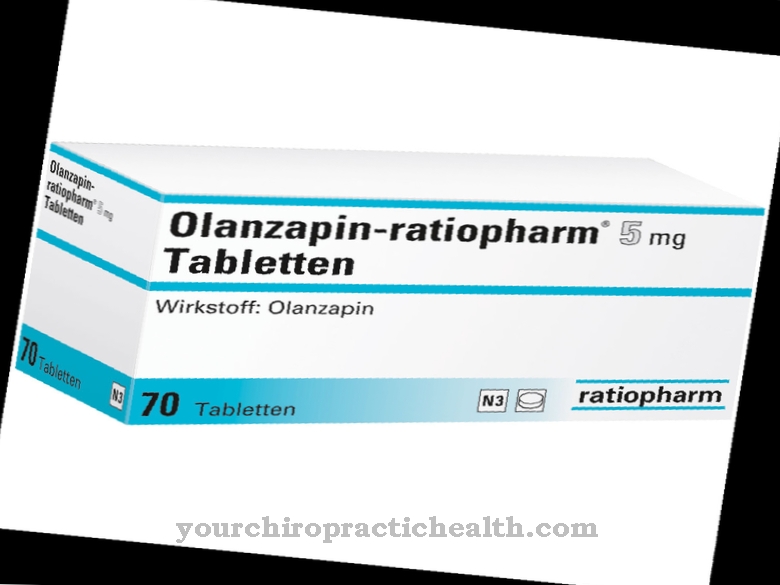The active substance Cisapride is one of the prokinetics that increase the motility of the gastrointestinal tract. The active ingredient triggers severe cardiac side effects and has therefore been withdrawn from the market in many countries. Use is not recommended, safer drugs from the group of prokinetics are available.
What is cisapride?
Cisapride belongs to the group of prokinetics. Prokinetics are active ingredients that promote motility, i.e. mobility, of the gastrointestinal tract. It has been withdrawn from the market in many countries due to severe side effects, such as causing irregular heartbeat and prolonging the QT interval.
Chemically it is a derivative of benzamide. The formula is C23H29ClFN3O4. It was withdrawn from the market in the USA in 2000, after which approval was also suspended in Germany. However, it is still available in some countries. The intake should only be done with careful consideration.
Pharmacological effect
Cisapride is a parasympathomimetic, which means that it increases the effectiveness of the parasympathetic nervous system. The parasympathetic nervous system is part of the autonomic nervous system and the antagonist of the sympathetic nervous system. The substance cisapride stimulates serotinin 5HT4 receptors. As a result of this stimulation, the receptors release the neurotransmitter acetylcholine. Acetylcholine plays a central role in the transmission of stimuli. It is released into the synaptic cleft and interacts with the receptors on the postsynaptic membrane. As a result, the membrane of the target cell changes its ion permeability, which can either trigger an excitation (depolarization) or an inhibition (hyperpolarization) of the target cell.
When using the active ingredient cisapride, the acetylcholine increases motility and increases peristalsis. So it seems prokinetic overall. A known side effect is a proarrhythmic influence on the heart, with cisapride above all an increased occurrence of the so-called long QT syndrome was observed.
Long QT syndrome is a heart disease belonging to the group of canalopathies in which the QT interval is pathologically prolonged. If the long QT syndrome occurs as a result of the administration of cisapride, it is a secondary, i.e. acquired, LQT syndrome. As a result of the side effect, the drug was withdrawn from the market in many countries.
The bioavailability of cisaprids is approx. 30-40%, the active ingredient is mainly bound to plasma proteins in the blood, the plasma half-life is about ten hours. Cisapride is mainly metabolized in the liver, via the cytochrome P450 system, and in the intestine. The active ingredient is excreted exclusively via the kidneys and bile.
Medical application & use
The active ingredient is used in reflux esophagitis, general movement disorders of the gastrointestinal tract, gastric paralysis and constipation. The indications are derived from the pharmacological properties of the cisaprids, the area of action is exclusively the gastrointestinal tract.
In reflux esophagitis, inflammation of the esophagus is caused by reflux (backflow) of acidic gastric juice. Contraindications are cardiac arrhythmias and tachycardia. The contraindications are due to the severe side effects of cisapride in the area of the heart.
Risks & side effects
The risks and side effects include cardiac arrhythmias and the aforementioned prolongation and the QT interval. The side effects are drastic and can be fatal. The drug or active ingredient was withdrawn from the market in many countries because the risks involved in using it were rated too high.
The use of cisapride is not recommended, as other active ingredients from the group of prokinetics are available that have fewer side effects and are not inferior to cisapride in terms of effectiveness.

























.jpg)


